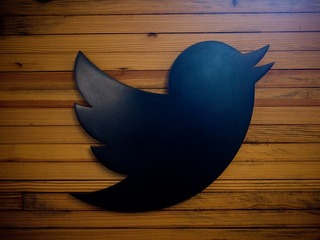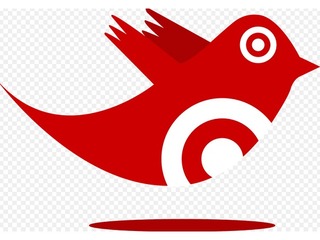Maven Clinic launches program for members who want to get pregnant without IVF
The company also expanded access to 12 different provider types for male fertility care
Read more...
Twitter is a company that makes almost all of its money through advertising. That basically makes its users, and all of their activity, the company's main product. And that means that what those users do both on, and off, Twitter has to be fair game.
Last month, the company rolled out its "tailored audiences" product, using browser based cookies to retarget ads on the network. And now those brands have been given even more ways to send out targeted ads to Twitter users.
"In December we announced the global availability of tailored audiences, giving advertisers the ability to reach visitors to their websites directly on Twitter," the company wrote in a blog post on Tuesday. "Today, we’re releasing new ways to create tailored audiences, so that advertisers can define groups of existing and potential customers more flexibly and connect with them on Twitter."
What that means is that brands can now find out who to send ads to on Twitter by using the user's email address and Twitter ID.
One way that that companies will now be able to use their own customer relationship management (CRM) databases to find out who is on Twitter.
"You can now create tailored audiences from lists of email addresses from your own customer relationship management (CRM) database or you can use your CRM database records that you have previously stored with an ad partner," Twitter explained.
Here's how it works: if a retailer wants to put up an ad that they are having a sale, and only want to target people who already have a membership, the retailer has the ability to share the e-mail addresses of its members with Twitter.
"We can then match that information to Twitter accounts in order to show the matched users a Promoted Tweet with the sale information."
Let's say, though, that the same retailer wants to target new customers. It can do that by accessing any public information that users have put up about themselves on Twitter, including their bio, follower count, verified status, or past Tweets. This information is accessed either from Twitter or by using Twitter’s API or Certified Products.
"The retailer may then use this list of Twitter ID’s to create a tailored audience through an ads partner, show those fashion influencers a Promoted Account and engage them as followers."
Not only that, but the companies have so much control that they also have the ability to exclude certain people now, either by their interests or keywords.
And, as always, Twitter users have the option to not allow any of their information to be shared.
Twitter's ad partners for the product: Acxiom, Datalogix, Epsilon, Liveramp, Mailchimp, Merkle, and Salesforce ExactTarget for CRM.
Twitter has a good reason to expand its ad products.
In the third quarter, advertising counted for $153.4 million. Out of $168.6 million. That is an astounding 91% of revenue.
And that number is rising quickly. In the second quarter of the year it had roughly $121 million from advertising, for an increase of around 27%
Twitter has three types of ads that it makes money from: Promoted Tweets, Promoted Accounts and Promoted Trends. Over 70% of its advertising revenue in the quarter came from mobile.
(Image source: https://www.mommyniri.com)
The company also expanded access to 12 different provider types for male fertility care
Read more...Ezra's AI cancer screening platform will be available in 150 RAYUS locations
Read more...Foggy uses the Taptic Engine in Apple Watch to provide vibrotactile stimulation for gait freezing
Read more...Startup/Business
Joined Vator on
Twitter is an online information network that allows anyone with an account to post 140 character messages, called tweets. It is free to sign up. Users then follow other accounts which they are interested in, and view the tweets of everyone they follow in their "timeline." Most Twitter accounts are public, where one does not need to approve a request to follow, or need to follow back. This makes Twitter a powerful "one to many" broadcast platform where individuals, companies or organizations can reach millions of followers with a single message. Twitter is accessible from Twitter.com, our mobile website, SMS, our mobile apps for iPhone, Android, Blackberry, our iPad application, or 3rd party clients built by outside developers using our API. Twitter accounts can also be private, where the owner must approve follower requests.
Twitter started as an internal project within the podcasting company Odeo. Jack Dorsey, and engineer, had long been interested in status updates. Jack developed the idea, along with Biz Stone, and the first prototype was built in two weeks in March 2006 and launched publicly in August of 2006. The service grew popular very quickly and it soon made sense for Twitter to move outside of Odea. In May 2007, Twitter Inc was founded.
Our engineering team works with a web application framework called Ruby on Rails. We all work on Apple computers except for testing purposes.
We built Twitter using Ruby on Rails because it allows us to work quickly and easily--our team likes to deploy features and changes multiple times per day. Rails provides skeleton code frameworks so we don't have to re-invent the wheel every time we want to add something simple like a sign in form or a picture upload feature.
There are a few ways that Twitter makes money. We have licensing deals in place with Google, Yahoo!, and Microsoft's Bing to give them access to the "firehose" - a stream of tweets so that they can more easily incorporate those tweets into their search results.
In Summer 2010, we launched our Promoted Tweets product. Promoted Tweets are a special kind of tweet which appear at the top of search results within Twitter.com, if a company has bid on that keyword. Unlike search results in search engines, Promoted Tweets are normal tweets from a business, so they are as interactive as any other tweet - you can @reply, favorite or retweet a Promoted Tweet.
At the same time, we launched Promoted Trends, where companies can place a trend (clearly marked Promoted) within Twitter's Trending Topics. These are especially effective for upcoming launches, like a movie or album release.
Lastly, we started a Twitter account called @earlybird where we partner with other companies to provide users with a special, short-term deal. For example, we partnered with Virgin America for a special day of fares on Virginamerica.com that were only accessible through the link in the @earlybird tweet.
What's next for Twitter?
We continue to focus on building a product that provides value for users.
We're building Twitter, Inc into a successful, revenue-generating company that attracts world-class talent with an inspiring culture and attitude towards doing business.


